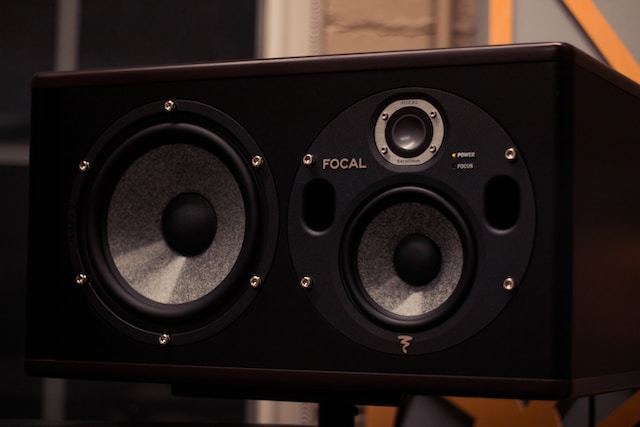The pursuit of a powerful and immersive audio experience has led to the development of various technologies and techniques. Among them, the subwoofer box plays a crucial role in reproducing deep and impactful bass frequencies. In this article, we will explore the world of subwoofer box design and its significance in achieving optimal sound quality. Whether you are an audio enthusiast or a professional sound system installer, understanding the principles and types of subwoofer box designs will empower you to create a superior listening environment.
Types of Subwoofer Box Designs
A. Sealed Subwoofer Boxes
Sealed subwoofer boxes, also known as acoustic suspension enclosures, are designed to provide precise and accurate bass reproduction. We will delve into the explanation of sealed box design, highlighting its advantages and disadvantages. Additionally, we will explore the ideal applications and sound characteristics associated with sealed subwoofer boxes.
B. Ported Subwoofer Boxes
Ported subwoofer boxes, also referred to as vented enclosures, offer enhanced bass response and increased efficiency compared to sealed boxes. We will examine the principles behind ported box design, outlining the advantages and disadvantages. Furthermore, we will discuss the applications and sound characteristics that make ported subwoofer boxes a popular choice among audio enthusiasts.
C. Bandpass Subwoofer Boxes
Bandpass subwoofer boxes provide a unique approach to bass reproduction, offering both high efficiency and controlled sound output. We will explore the intricacies of bandpass box design, shedding light on its advantages and disadvantages. Moreover, we will discuss the ideal applications and sound characteristics that make bandpass subwoofer boxes stand out in specific audio setups.
Factors Influencing Subwoofer Box Design
A. Speaker Specifications
Understanding the relationship between speaker parameters and box design is vital for achieving optimal performance. We will explore how the Thiele/Small parameters guide the selection of appropriate box volumes and configurations to complement specific speakers’ characteristics.
B. Vehicle or Room Considerations
The environment in which the subwoofer box will be placed plays a significant role in its design. We will discuss how factors such as vehicle size and interior acoustics influence the choice of subwoofer box design. Additionally, we will address space constraints and customization options to ensure the best integration of the subwoofer box in any given environment.
C. Desired Sound Quality
Every audio enthusiast has a unique preference when it comes to sound characteristics. We will delve into the aspects of desired sound quality and how they influence subwoofer box design choices. By balancing accuracy and boominess, one can tailor the box design to achieve the desired frequency response and overall sound signature.
Subwoofer Box Construction
A. Materials for Building Subwoofer Boxes
The choice of materials significantly impacts the performance and durability of subwoofer boxes. We will provide an overview of commonly used materials, such as Medium Density Fiberboard (MDF) and fiberglass. By highlighting the strengths and weaknesses of each material, readers will gain insights into selecting the most suitable material for their specific requirements.
B. Box Assembly Techniques
Building a subwoofer box requires attention to detail and precision. We will provide a step-by-step guide, covering the essential aspects of box assembly, including bracing and sealing techniques. By following these instructions, readers can ensure a robust and well-constructed subwoofer box.
C. Custom vs. Pre-fabricated Subwoofer Boxes
The market offers both custom and pre-fabricated subwoofer boxes. We will discuss the benefits and drawbacks of each option, empowering readers to make an informed decision based on their budget, time constraints, and specific needs. Additionally, we will touch upon considerations such as customization options, compatibility with specific speaker models, and the convenience of installation, allowing readers to weigh the advantages and disadvantages of custom and pre-fabricated subwoofer boxes.
Subwoofer Box Tuning
A. Optimizing Subwoofer Box Parameters
Achieving the desired sound quality often requires fine-tuning the subwoofer box parameters. We will explore the importance of adjusting box volume and shape to complement the speaker’s specifications and achieve optimal bass response. Furthermore, we will provide insights into calculating port dimensions for ported boxes, ensuring the correct tuning for enhanced performance.
B. Fine-Tuning the Sound
To further refine the sound reproduction, we will discuss the use of damping materials and acoustic treatments. By strategically placing materials within the subwoofer box, unwanted resonances can be minimized, resulting in a cleaner and more accurate bass response. We will also highlight the significance of measuring and adjusting the subwoofer box performance using specialized tools, enabling readers to achieve the best possible audio experience.
Conclusion
In the pursuit of audio excellence, subwoofer box design plays a pivotal role. By understanding the principles and types of subwoofer box designs, as well as the factors influencing their construction, enthusiasts and professionals alike can optimize bass reproduction and create immersive sound environments. Whether it’s the precise and accurate bass of a sealed box, the enhanced efficiency of a ported box, or the unique characteristics of a bandpass box, each design has its merits and applications. With careful consideration of speaker specifications, environmental factors, and desired sound quality, the subwoofer box can be tailored to meet specific needs.
By employing proper construction techniques and tuning the box parameters, enthusiasts can maximize the potential of their subwoofer systems. Whether opting for custom construction or pre-fabricated solutions, the choice should be based on individual requirements and preferences. The journey of subwoofer box design is a blend of science and art, as one balances technical knowledge with subjective listening experiences.
In conclusion, the art of subwoofer box design opens up endless possibilities for audio enthusiasts and professionals to elevate their sound systems. By mastering the intricacies of box design, one can achieve powerful, accurate, and immersive bass reproduction, creating a captivating audio experience that resonates with every beat and note. So, dive into the world of subwoofer box design, unleash your creativity, and elevate your audio system to new heights.





